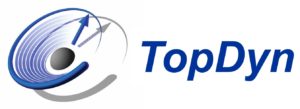

Seminar über die Physik der kondensierten Materie (SFB/TRR173 Spin+X und SFB/TR288 Kolloquium, TopDyn-Seminar)
April 3, 2018 at
2:30 p.m.
in
MEDIEN-Raum, Staudinger Weg 7, 3. Etage, Raum 03-431
Univ-Prof. Dr. Jure Demsar
Univ.-Prof. Dr. Hans-Joachim Elmers
Univ.-Prof. Dr. Mathias Kläui
Univ.-Prof. Dr. Thomas Palberg
Development of spin-polarised transistor, nano-spin motor and antiferromagnetic Heusler alloys
Jun-young Kim (Department of Physics, University of York, UK)
In this talk, I will present recent results on developments of optically-gated Fe/n-GaAs spin injection devices, NiFe/Cu lateral spin valves and antiferromagnetic Heusler alloys including Mn3Ga and Fe2.5VAl. These researches are parts of University of York’s investigation into new classes of spintronic devices and antiferromagnetic materials.
Firstly, Fe/n-GaAs lateral spin valves were fabricated to probe an optical gating technique of electrically-injected spins in GaAs. More specifically, a circularly-polarised light was used to photoexcite spin-polarised electrons in n-GaAs channel, where the optically- and electrically-injected spins would interact and modulate resultant non-local signals. Preliminary results on these devices will be discussed.
Secondly, all-metallic “nano-spin motor” devices were investigated, where a lateral spin transfer torque was utilised to manipulate magnetisation direction of a ferromagnetic island. The device consisted of a nanometric NiFe island with two “horse-shoe” injector contacts for applying spin transfer torque in opposite directions. Visualisation of the island magnetisation by using diamagnetic biogenic guanine crystals obtained from fish scales [1] was also explored.
Lastly, growth and characterisation of antiferromagnetic Heusler alloy compounds, namely Mn3Ga and Fe2.5VAl, will be presented. Atomic compositions and structural properties of the Heusler alloy films, sputter-deposited with a different number of dopant “pegs”, were studied. The optimised antiferromagnetic Heusler alloy films were characterised as ferromagnet/Heusler alloy bilayer structures, where exchange-bias fields between 15 Oe and 400 Oe were observed at 100 K [2, 3].
This work has been partially supported by UK-EPSRC (EP/M02458X/1) and EU-FP7 HARFIR (NMP3-SL-2013-604398).